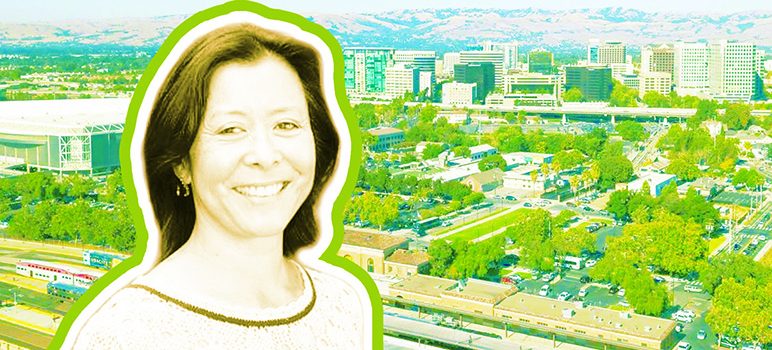As downtown San Jose starts to rapidly evolve with taller buildings, an expanded public transit system and Google’s mega-campus, a few neighborhood groups have joined forces to make sure residents stay engaged through the revisioning process.
The Diridon Area Neighborhood Group—that’s DANG, for short—launched Sept. 9 and is made up of the Shasta/Hanchett Park, Delmas Park and North Willow Glen neighborhood associations. The three areas converge right at the doorstep of Google’s prospective downtown campus.
But while the tech-giant’s new offices have made headlines as the epicenter for downtown growth, DANG will widen its focus to more than just the home of future Googlers. BART, high-speed rail, Caltrain, VTA, building height limits and non-Google developments have all been tapped as priorities to keep an eye on, according to Kathy Sutherland, one of the group’s founding members.
Sutherland sits on San Jose’s 38-member Diridon Station Area Advisory Group, which is already at work shaping a vision for the district’s redevelopment, but she says voices of residents get drowned out by the chorus of industry professionals on the board. Much of its membership, she says—including transit and development experts from organizations such as VTA, SPUR and Silicon Valley at Home—are paid to be there.
“There’s so much going on to think that any volunteer can take this on is a lot of ask and it’s overwhelming,” Sutherland says. “I couldn’t possibly attend all the meetings about this area because I work, as do most people.”
To guide the group of neighborhood leaders, DANG retained land-use consultant Bob Staedler, principal of Silicon Valley Synergy, as an advisor.
“When Google started, it was going to be 10 years out,” he says in an interview on Monday. “All of a sudden, the framework comes out and they’re announcing they’re going to start construction in two years when they haven’t figured out how you’re going to get people in and out on a daily basis.”
Staedler says they’ll meet with Google, San Jose city officials, developers and the Station Area Advisory Group, among other key actors. Overall, he says, they want to work with the city to “do more outreach” and “be more active.”
“The framework has a lot of holes in it,” Staedler says. Forming the group, he adds, “creates a win-win situation here.”
While DANG is coming to the conversation to voice its residents concerns, Sutherland says that doesn’t mean it’s anti-development—or anti-Google.
“We know where we live and we live there intentionally,” she says. “But as neighborhood leaders, we’re looking out for all of the people who live surrounding or in the area.”


Sooner or later your going to feel like that skunk that got run over by a truck, and now your there lying on the side of the road, everyone see’s you and knows what happened, they all think it stinks, but their not stopping.